While some foods are great year-round, such as beef in Buenos Aires or pizza in Brooklyn, the most toothsome morsels often have a short shelf life. The savvy eater knows that what’s good for the belly is also good for the planet, so he or she gobbles what’s local and what’s in season whenever possible. Here’s a brief guide about what to eat—and when—around the world.
A note on the calendar: festival dates may fluctuate, so double-check before booking your ticket. Furthermore, some foods discussed below might appear at other times or in other places. A dish’s uniqueness often rests not in what we see, smell, or even taste, but in what we know about its history or connection to region, tradition, or ritual. Happy noshing!
January: Peking duck in China

Many restaurants offer Peking duck, but this dish really soars when eaten to celebrate the Chinese New Year.
Traditionally, the duck symbolizes fidelity, while its reddish color symbolizes happiness; a bite during the 15-day celebration, usually in late January or early February, helps guarantee that these qualities will stay with you for the other 350 days.
The fattest, whitest ducks are roasted, then served table side by the chef in three ways: the crunchy, thin skin, dipped in garlicky or sweet sauce; the moist meat, with a side of steamed pancakes; and the carcass, either as a soup or packaged to take home.
>> Going to China? Find a flight and find out about per day costs in our travel guide
[social]
February: Fermented shark in Iceland
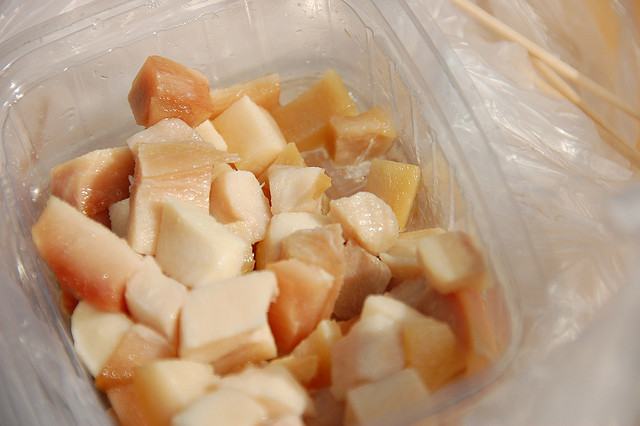
Hákarl has become something of a stunt food for celebrity chefs: Anthony Bourdain calls fermented shark the worst thing he’s ever eaten, Gordon Ramsay couldn’t keep it down. But this Icelandic delicacy reminds connoisseurs of their roots, as powerful, hearty Vikings.
When first killed, the sharks are poisonous; only four to five months of curing renders the animals “edible.” (A lot of people find the resulting smell of ammonia too nauseating to overcome—hence the quote marks.)
During the midwinter celebration known as Thorrablot (Þorrablót, in Icelandic), the brave or the foolhardy chomp down on cubes of the rotten meat, then take long glugs of Brennivin, a fiery local schnapps that’s guaranteed to make you forget about the taste and the cold.
>> Find out why you might want to add Iceland to your RTW trip and read about traveling to Iceland in the spring.
March: Wats in Ethiopia

It’s said that necessity is the mother of invention. Nowhere does this cliché hold more true than when it comes to eating around dietary restrictions. Orthodox Christianity prescribes that its followers regularly abstain from meat, particularly during the weeks leading up to Easter. In Ethiopia, a rich tradition of vegetarian and vegan specialties has developed since people began converting to the faith in the fourth century.
Diners use injera, a porous sour bread, as both plate and utensil to scoop up the wats (stews) made from lentils, split peas, cabbage, carrots, spinach, corn, chard, or potatoes, and spiced with berbere (a mixture of indigenous plants and herbs, including ginger, ajwain, coriander, and clove).
>> Checkflight prices to Ethiopia and submit an indie travel rating and daily budget for Ethiopia if you’ve been there
April: Ramps in New York City

Forget about blooming daffodils or omnipresent umbrellas. For foodie New Yorkers, ramps, and only ramps, herald the arrival of spring. Consider them the vegetable version of the groundhog: their appearance at greenmarkets and on menus around town signifies the end of winter, regardless of what the thermometer says. Also known as spring onions and wild leeks, ramps taste like a cross between onion and garlic.
They’re baked on pizza, mixed in soups, tossed with pasta, fried with eggs. They’re served raw, steamed, roasted, pickled, and braised, in entrees and as sides. Thoughtful devotees freeze leftovers for future use, since ramp season, like spring itself, is always too short.
>> Check out the New York City Travel Guide for tips and advice for visiting one of the world’s great cities.
May: Elderflowers in the United Kingdom
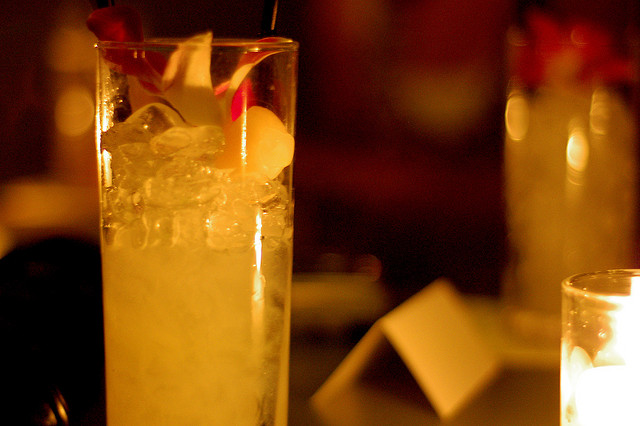
Once synonymous with bland puddings and underseasoned curries, British cuisine has undergone a delicious resurgence in recent years.
In the United Kingdom, as in so many areas around the world, an increased awareness about eating according to the seasons has dramatically improved not only food’s flavor but also chefs’ creativity. Rhubarb, sea trout, and asparagus begin to peak around May, as do the white blossoms of the elder tree.
While the elderflower may be mashed into a sorbet or boiled into a jam, it’s particularly lovely when sipped. Elderflower syrup may be made at home or purchased, then blended with still or sparkling water into a cordial, somewhat redolent of grape and lavender. The result feels as cool and crisp as a Jane Austen novel.
>> Find a flight to London and read about why you should add England to your indie trip.
June: Summer truffles in Italy
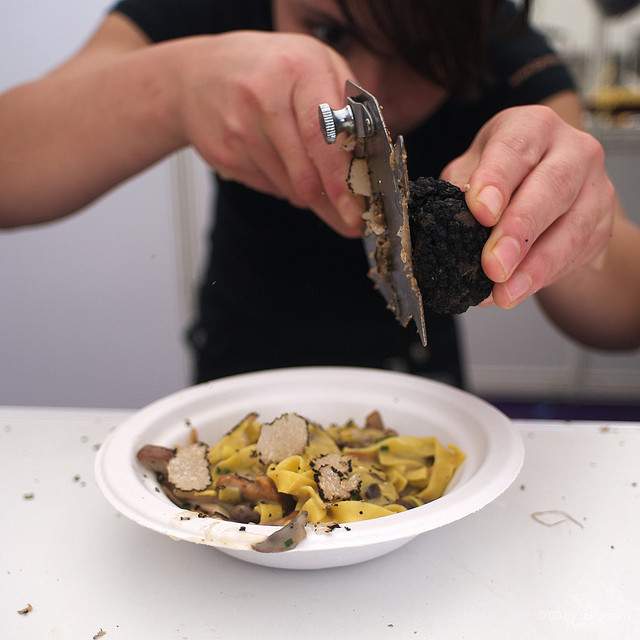
Sure, the world’s most famous and most expensive seasonal food peaks in the fall and winter. Yet the Mediterranean does produce other varieties of truffle for those of us who simply can’t wait. The aptly named summer truffle, or scorzone, grows alongside oak and other trees in Italy.
A weaker scent and less potent flavor makes this species of mushroom cheaper than its white or black counterparts, and the brownish flesh tends to be crispier. But it can be shaved over pasta or scrambled into eggs, whipped into butter or drizzled with oil and served on bread. And like the others, summer truffles often require the help of specially trained dogs and pigs (even though the pigs sometimes gobble up whatever they find).
>> Read tips for visiting Italy and check out these 4 stops on an Italian foodie tour
July: Unagi in Japan
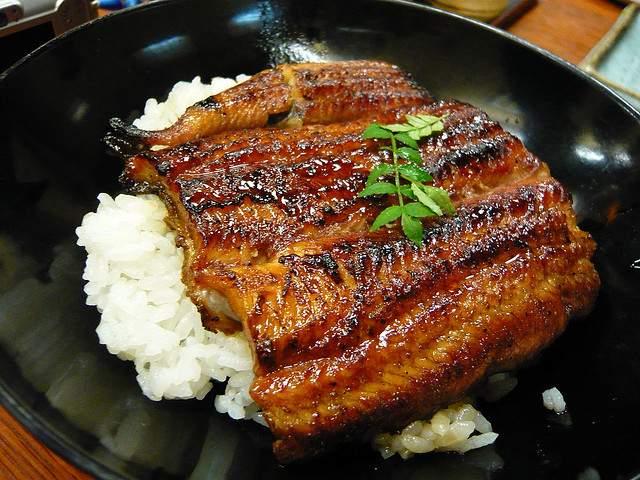
On doyo no ushi no hi (eel day), people throughout Japan eat unagi (freshwater eel). Allegedly, unagi provides stamina and helps combat summer’s withering humidity, a belief that dates to at least the seventeenth century. Many restaurants prepare a variation of unagi-no-kabayaki, in which the eel is grilled over charcoal, sprinkled with sansho (a powdered spice) or splashed with a sweet soy glaze.
When served with rice, the dish is called either una-juu or una-don, depending on the serving bowl. And depending on the region, chefs fillet and cook the eel differently, preparations that have their own discrete names. So maybe the real benefit of eating unagi is in its ability to distract one’s attention from the heat by way of multitudinous appellations.
>> Learn how to save money in Japan and check out the Japan Travel Guide for travel advice.
August: Kpoikpoi in Ghana
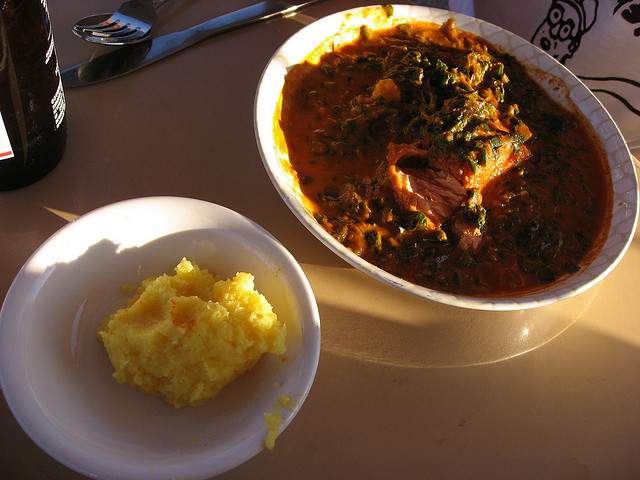
Some customs transcend geography and culture. Among the Ga people of Ghana, the Homowo (to jeer or hoot at hunger) festival commemorates the end of a long period of suffering, when their ancestors either had a successful harvest or defeated their enemies (stories about Homowo’s origins differ).
Families get together to eat kpoikpoi, cornmeal that’s been steamed and mixed with palm oil, along with fish-and–palm nut soup. Gifts, such as bottles of gin and firewood, are exchanged, disagreements are forgiven, and kpoikpoi is sprinkled about as an offering to and in remembrance of the dead. Whereas Americans finish their Thanksgiving celebrations by napping in front of football games, the Ga usually end their feasts with ritualized dancing.
>> See why you might want to start your African travels in Ghana
September: Pomegranates in Afghanistan

Does any fruit demand more of its eaters than the pomegranate? First, it’s really hard to spell. Second, it’s really hard to eat: after puncturing the leathery skin, you have to tear through a thick white membrane. With a little effort, you’ll find the seeds, enclosed in flavorful, ruby-like casings.
Recently, pomegranate trees have begun profitably replacing opium poppies in parts of Afghanistan, though the fruit has been cultivated throughout Central Asia for centuries. In fact, some ancient Greek myths and sections of the Bible describe its lusciousness, and still-life artists often used pomegranates to represent fertility or death. Today, however, lots of juice companies tend to focus on the purported anti-aging properties.
October: Grapes in North America

So much comes into season along the eastern seaboard of North America in October, including apples, pumpkins, and big bags of Halloween-themed miniature Snickers, anyone would be forgiven for gorging. Difficult as it may be, try to save room for grapes, both wine and table varietals.
Three major types proliferate in this large geographical area: natives, like juicy Niagaras and plump blue-black Concords (above); transplants, like white Rieslings descended from original German crops, and hybrids, like Seyval Blanc, which blend Old and New World characteristics. Wine technology has obviously been around for a long time, but it wasn’t until the late 1860s that a New Jersey dentist figured out how to make unfermented grape juice in the United States. His name was Thomas Welch.
>> Check out some of the best North American wine regions and see what pillars you should plan your North American trip around.
November: Bread of the dead in Latin America

For a few days each year, levity and sugar constitute the appropriate response to death throughout Latin American communities. During día de los muertos (day of the dead) celebrations, commonly held from October 31 to November 2, ofrendas (offerings) are left for the departed, including razors, bottles of tequila or soda, pillows, candied or chocolate skulls, and other goodies.
Glazed egg breads may be fashioned into babies (called guaguas de pan in Ecuador and wawas elsewhere in the Andes) or into loaves (called pan de muerto in Mexico), with leftovers molded and frosted to look like bones. What the dead don’t get the living do, a sweet reminder that death shouldn’t be feared.
>> See photos from Oaxaca’s Day of the Dead
December: Christstollen in Germany

Unlike its American counterpart, stollen is neither used as a punchline nor as a doorstop. Instead, this fruitcake is enjoyed and generally beloved throughout Germany, especially around Christmas, when it goes by the name Christstollen. The distinctive loaf shape was thought to resemble the baby Christ in swaddling clothes.
First made in the 1400s, stollen became especially popular after 1730, when a group of bakers in Dresden produced a cake that weighed almost two tons for the royal family and its guests. The considerably smaller versions made these days may have raisins, currants, candied or dried fruit, almonds, rum, a liberal coating of powdered sugar, and sometimes, as a surprise, a marzipan center.
>> Find out why Germany is more than Oktoberfest and learn about Europe’s best Christmas markets
What’s your favorite seasonal food? What about a favorite regional or traditional specialty? Share your thoughts in the comments or read more about food around the world:
- The BootsnAll food pages have over 70 articles about food around the world.
- 11 Delicious Street Foods From Around the World
- 10 Weird Food Delicacies
- 6 Places to Find Great and Exotic Street Food
- 13 of the Most Unusual Snack Foods
- 7 Popular Foods Named After Places
Photos by: joeywan, moohaha, amber in norfolk, sparktography, Angelina, mirvettium, WordRidden, gwarcita, usaiddoc, lanier67, A.Davey, Birger Hoppe
